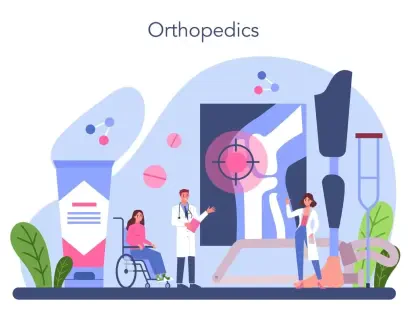Tackling the Opioid Dilemma with Innovation
The opioid crisis presents formidable challenges for healthcare systems worldwide as the quest for effective pain management continues. Opioid use has led to widespread addiction and dependency problems, prompting an urgent need to reevaluate pain treatment paradigms. In the United States alone, significant numbers of individuals suffer from chronic pain, leading to the search for safer, non-opioid medications. This urgency underscores the exploration of diverse approaches to manage pain without addiction risks.
Non-Opioid Alternatives Gaining Momentum
The societal impact of opioid addiction has catalyzed a shift in how pain management is addressed globally. Traditional pain treatments have fallen short, leaving patients vulnerable to a cycle of dependency and limited relief. This backdrop has set the stage for innovative therapies to meet the growing demand for safer alternatives. Non-opioid options have begun to attract interest as they promise to address pain without the adverse effects commonly linked with opioids, presenting a crucial turning point for healthcare systems worldwide.
Breakthroughs in Non-Opioid Analgesics
At the forefront of this movement are non-opioid analgesics, which differ fundamentally in their mechanisms. These drugs target specific sodium channels like NaV1.7 and NaV1.8 to modulate pain transmission. Highlighted in this sector is Eli Lilly’s substantial investment in SiteOne Therapeutics, aimed at enhancing the company’s pain management capabilities. SiteOne’s novel approach focuses on sodium channel modulation to alleviate pain, showing promise for reducing addiction risks.
Consider SiteOne’s lead candidate, STC-004, which targets NaV1.8. This asset illustrates advancements in developing non-addictive pain solutions. Additionally, Vertex Pharmaceuticals’ Journavx represents another significant stride among approved non-opioid medications, elevating competition in this innovative arena.
Steadfast Support and Potential Impact
Industry leaders and researchers convey optimism about these developments, emphasizing non-opioids’ potential to revolutionize pain management. Their perspectives highlight the promise these alternatives hold in redefining effective pain treatment. Patient narratives further illuminate this journey, with stories from those who have benefited from non-opioid medications providing a personal touch to the scientific discourse.
These accounts reflect the tangible impact that such innovations can have, contrasting sharply with opioid-related dependency challenges. They bolster the argument for a future where non-addictive medications become the standard, underscoring the significant shift toward proactive and responsible pain management practices.
Adapting Strategies for a New Era
The integration of non-opioid analgesics into existing pain management protocols presents practical implications for healthcare providers. Professionals are encouraged to remain informed on new advancements and incorporate these alternatives when appropriate. Education and awareness are essential components, enabling clinicians to propose viable options to patients seeking effective pain relief without addiction risks.
Ultimately, adapting to these innovations requires commitment from both healthcare providers and policymakers, driving the necessary changes in healthcare infrastructure and educational frameworks. Promoting diversified treatment options can lead to a more comprehensive approach to addressing pain, ensuring patients receive care that prioritizes both efficacy and safety.
In conclusion, the synthesis of this urgent exploration revealed that shifting focus to non-opioid options would pave the way for transformative change in pain management. Non-opioid analgesics offered a path forward from opioid dependency, heralding a new era of effective pain relief without the shadow of addiction. Their rise signified a profound evolution in pharmaceutical strategies, targeting not only pain but also societal well-being. Looking ahead, fostering collaboration and innovation continued to be pivotal in solidifying these advancements as the future mainstay in treating chronic pain.









